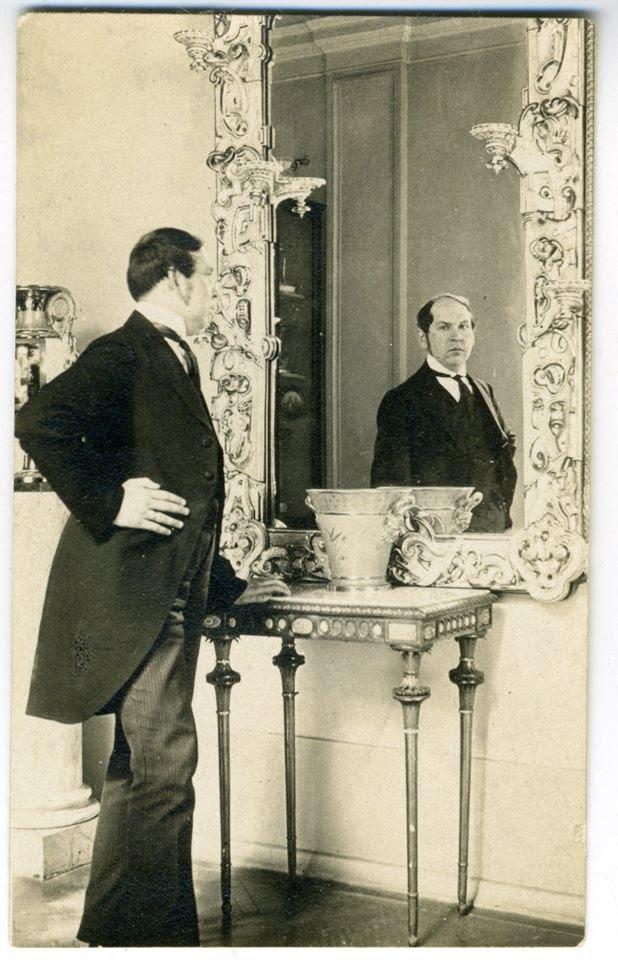His paintings were slated to be destroyed during the Soviet era, but were saved by the craftspeople of so-called special funds. Yet, Narbut is not merely a key figure of the history of art. He incorporated into his modern illustrations the tradition of the Ukrainian baroque of the 17th – 18th centuries. His style became a source of inspiration for contemporary Ukrainian artists, illustrators, and brand creators, who continue to draw upon history and venerable symbols in their works.

As part of the project Narbut XXI, Ukrainian film director Nadiya Parfan, has produced the documentary Brendari that uses a series of interviews to meld the figure of Narbut with the history of Ukrainian branding from the period of the Ukrainian People’s Republic to the present.
“How did the coat of arms ‘tryzub’ evolve to what it is? Who designed our banknotes? What can Ukraine be proud of in a world where the Chinese do everything? Let’s go see our film Brendari,” says Parfan.
The project Narbut XXI marks a century since the death of Narbut. The project aims to reexamine his work, update his cultural legacy and his ideas to address contemporary design, and to present Narbut — one of the most prominent artists of the 20th century — to the world. The project was supported by the Ukrainian Cultural Foundation, and conducted in cooperation with Rodovid publishing house as well as the Ukrainian Institute of Modern Art in Chicago.

Lydia Lykhach, project manager, founder and director of Rodovid publishing house, explains the project’s goal:
“Heorhiy Narbut is a great artist, a world-class figure, an entire epoch in the history of Ukrainian art. He laid the foundations of graphic design of the newly-created state of Ukraine. Narbut is one of the founders and first professors of the Ukrainian Academy of Arts, and in 1918 he was its rector for a brief period of time. The academy was the center of artistic life in Kyiv in 1917–1920. Narbut is the most prominent graphic artist of his time, who influenced Ukrainian graphics, font art, and book design of the twentieth century.
It is important for the project to prevent the cementing of Narbut’s image not only as an icon of the Ukrainian style. Instead, we seek to contextualize Narbut in the 21st century. Not only his creative work, but his innovative ideas, the search for a new visual language, and principles — rethinking the roots.”
Examples of Narbut’s art
The project Narbut XXI started with the research conducted by Professor Myroslava M. Mudrak, The Imaginative World of Heorhii Narbut and the Making of a Ukrainian Brand.
“Now, with Ukraine’s future uncertain and the state’s identity under threat, a retrospective look at Narbut’s national branding is more relevant than ever. It concerns an urgent question — what is modern Ukrainian culture and who are contemporary Ukrainians? What is contemporary Ukraine’s brand? How does it affect the perception of Ukraine in the world?” These are the questions addressed by Mudrak.

Also, a virtual exhibition was conducted within the framework of the project and the film released.
“Brand Makers (Brendari) is a story about Ukraine’s visual identity and its evolution from Heorhii Narbut’s work in 1917–1920 to today,” commented the director of the film Nadiya Parfan.
The documentary combines a series of interviews with followers of Heorgiy Narbut that center on design and art schools in Ukraine. It features Ukrainian designers Pavel Vrzhesch from Banda Agency (Kyiv/San-Francisco), Mykola Shkvarok and Yevhen Yefimenko from the Brendari studio (Ivano-Frankivsk), and contemporary artist Oleh Tistol. The film also features Yuliya Lytvynets, director of the National Art Museum of Ukraine which has preserved Narbut’s works for more than 50 years in a special collection, as well as the editor of the Narbut Anthology, Bohdan Zavitii.
Read also:
- Recovering the forgotten names of the Ukrainian avant-garde
- “Pushing Hollywood aside” – renaissance in Ukrainian cinema
- New documentary on Crimean occupation released | VIDEO
- “Man with a Movie Camera”: One day of a 1920’s Ukrainian city in the early Soviet times
- Meet Ukraїner, “project that tells the world about the least discovered country in Europe”
- Eleven films about Euromaidan you can watch online
- New film shows Kazakhs they suffered a Holodomor too, infuriating Moscow
- The Hunger for Truth: Documentary about Canadian journalist who was first to report about Holodomor
- Explosion of new Ukrainian music after introduction of protectionist language quotas








